BIJOU STANDARD POODLES
POODLE COAT
One thing AKC, UKC, CKC can all agree on when it comes to the Standard Poodle Breed Standard
is that the Poodle is to have a:
"Curly coat of naturally harsh texture, dense throughout"
While that is the "ideal coat", poodles do have a variety of coat differences
that is rarely spoken about. So of course at Bijou Poodles, we explore all the oddities and differences
within our breed and share it with the Public.
*Cick here to view Poodle Structure
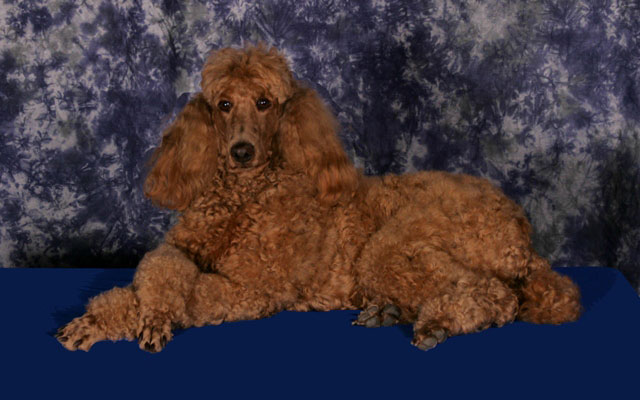 ...
...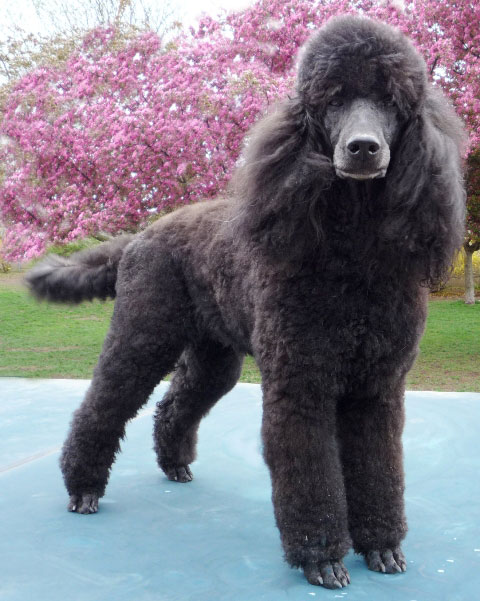
We have had apricot, black and red poodles with a wavey coat which was very easy to maintain
because it does not knot up as there is very little curl, but is more difficult to style as will not stand up
like the tight curly coat will when blown dry.
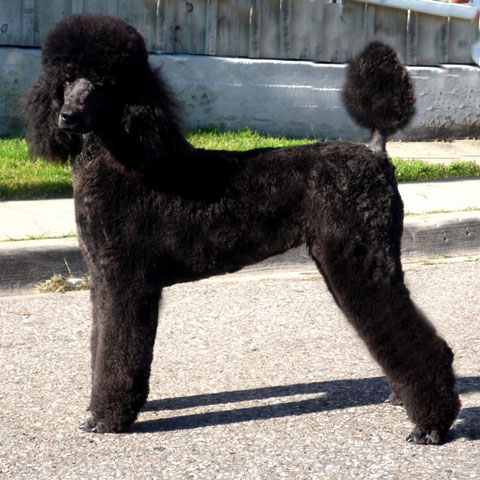 ...
...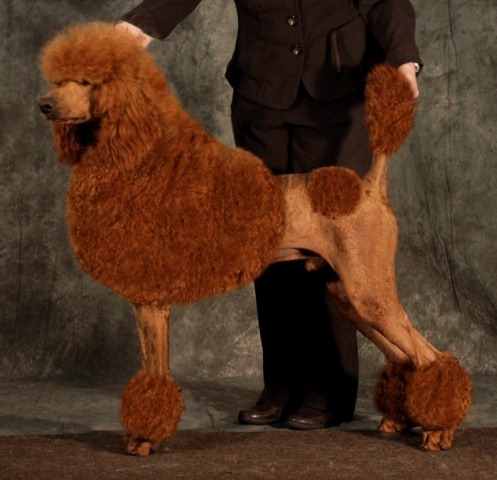
We have had black, red and brown poodles with very tight curly coat which is alway a nightmare to groom
as those tight curls, curl into knots quickly, if not kept combed and maintained. However this coat when blown dry
will be very plush and easy to scissor into perfect life sculptures and this is the proper desired Poodle coat.
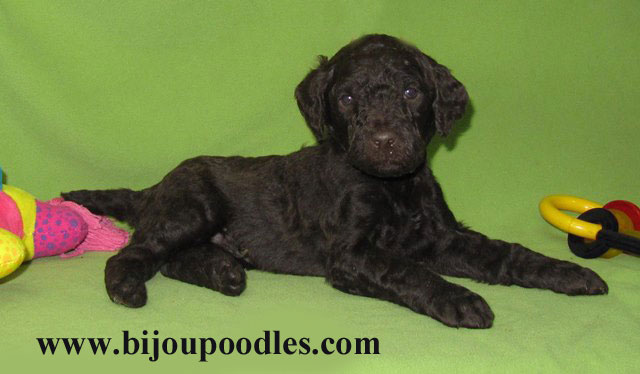 ...
...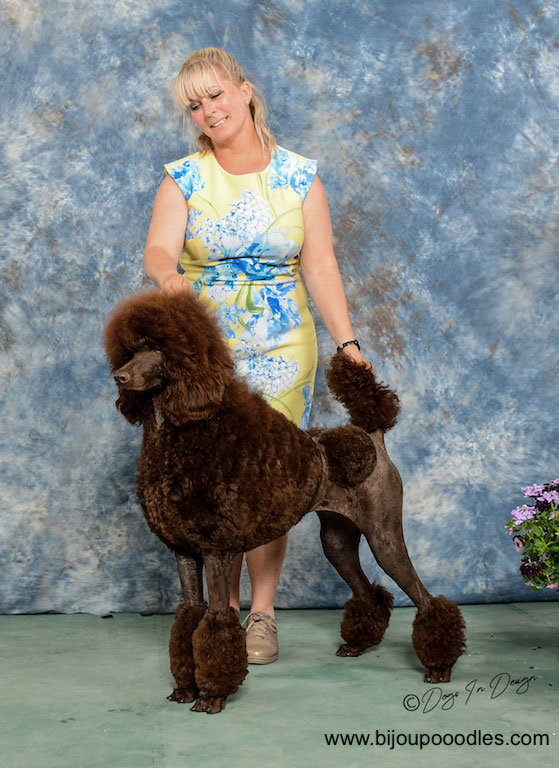
My "Chia" is such a poodle and she now has the best thickest show coat.
On ocassion we get a puppy born that has a straight, course, sparser coat
that will also shed or "blow coat" which is really noticable when bathing, which can surprise people.
We call this the "ugly duckling coat" to refer to simular coated pups
because these pups always bloom into "swans" as adults, with proper courser, dense curly coats
that is so desired by Poodle show people and for those doing grooming competitions.
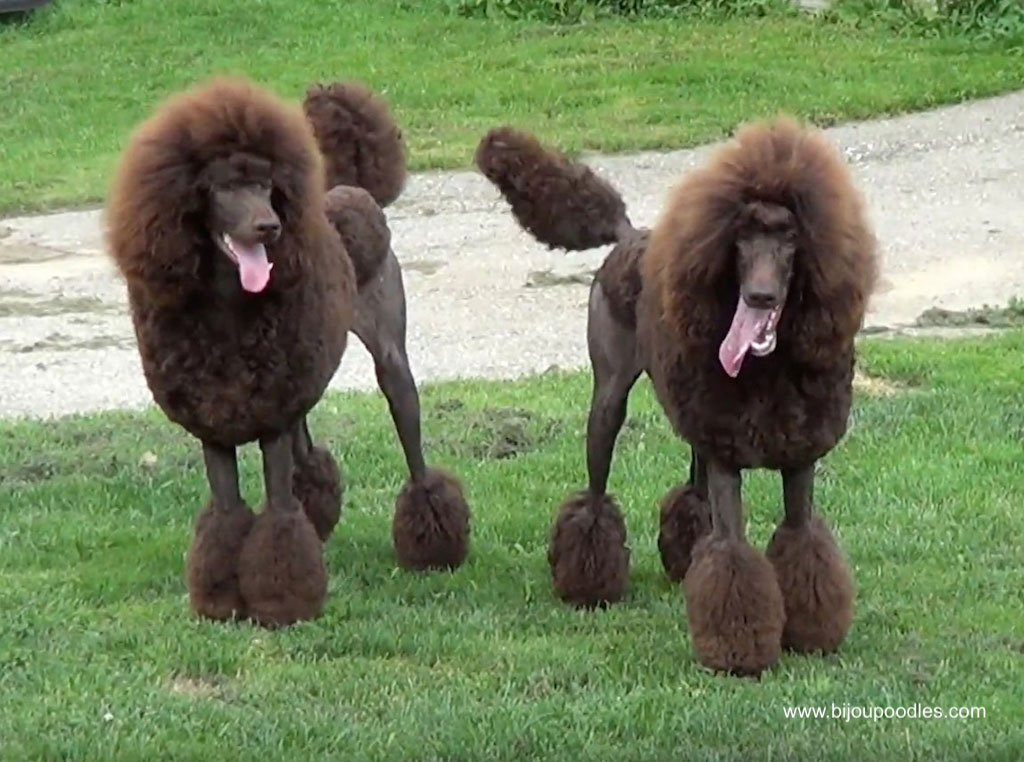
This is Chia and Tulip
Chia on the left and Tulip on the right
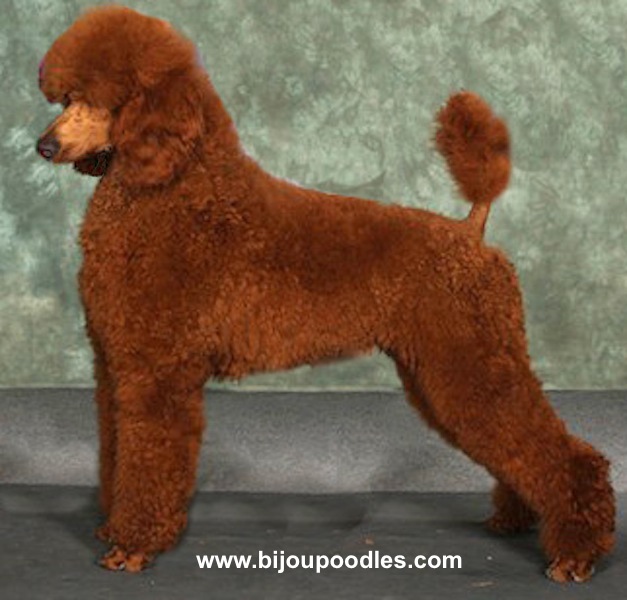
(Our Pet Poodles may not have their proper adult coat come in until they are 2 years of age)
Hair texture can also vary.
Red Poodles same as red headed humans have thinner hair and it can stay straight or puppy coat until 3+ years of age.
Poodles do go through a "coat change" at around 6-9 months
and then around a year the Poodles have a "coat change over"
it is every show breeder's nightmare because of course this is when
we start to show at 6 months of age and also at 12 months of age
is when we want full show coat for their continental show clip
This is when the puppy coat starts to fall out and adult coat comes in.
One breeder described it as the puppy and adult coat are fighting to stay.
It can be a nasty matted mess overnight, and it seems you just groom them and
BAM you have knots again… and lots of "dust bunnies" as the coat comes out
and is thinner, adding fish oil to the diet is said to help, but best is regular grooming
POODLE OFFICIAL CLIPS
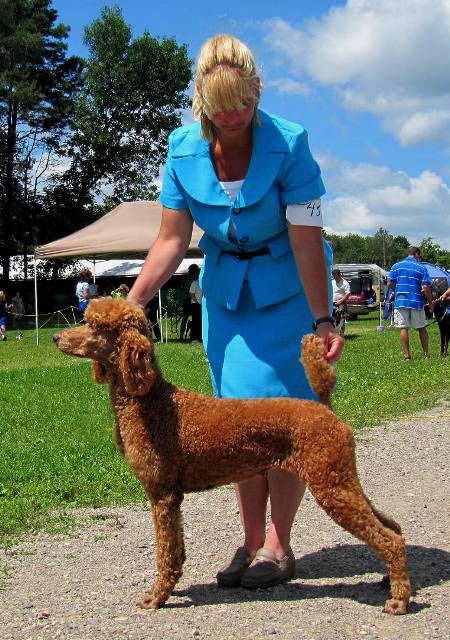 ...
...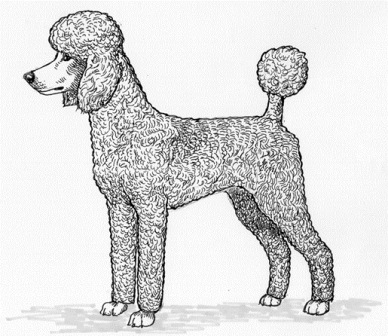
"SPORTING CLIP".
Face, feet, throat and base of tail are shaved.
There is a pompon on the end of the tail. Coat on the top of the head is scissored into a cap.
The rest of the body and legs are trimmed following the outline of the dog.
The body coat shall be no longer than 1 inch in length. Leg hair may be slightly longer.
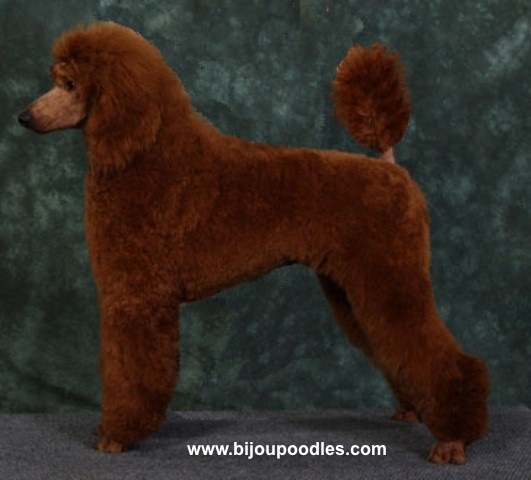
PUPPY CLIP
This is seen at AKC, FCI, UKC, CKC shows on Poodles under 12 months of age
Of course the longer the coat the better the chances of winning.
We can assist any of our puppy people with getting their Puppy groomed for show.
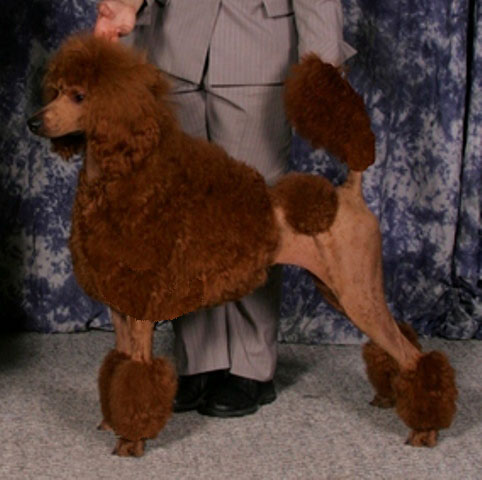
Continental Clip
This clip is seen on Standard Poodles over 12 months of age.

Modified Continental Clip
or Historically Correct Continental Clip
In this clip there is no top knot to be held in place with elastics instead the cap is scissored.
 ..
..
 ..
..
 ..
..
I won't waste this page discussing coat colour and Patterns except to mention that
there are "patterns" such as parti color in various amounts of colour and patterns caused by using whites
phantom (Rottweiler markings) which can be carried behind a solid colour and pop up in a solid litter
Brindle which is a pattern caused by the silver gene
"Shading or Tipping" in degrees of length, creating what is called a sable, caused by the silver gene
and of course all combinations of the above which are discussed throughout some of the following pages:
Colour Breeding
Muti Color Poodle Club of America
UKC Multi-color Poodle
 ...
...
 ...
...
 ...
...


 ...
...



 ..
..
 ..
..
 ..
..